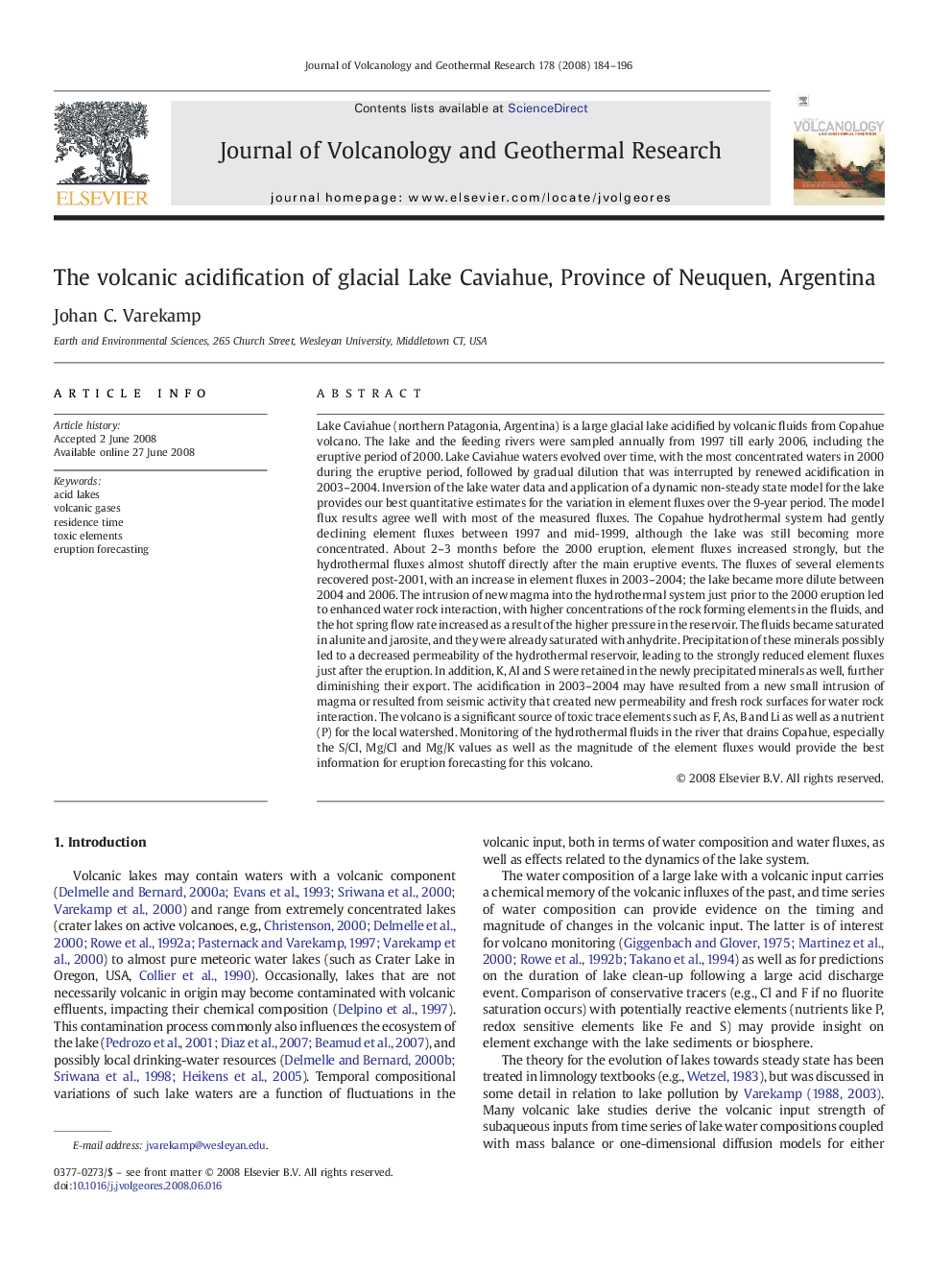| کد مقاله | کد نشریه | سال انتشار | مقاله انگلیسی | نسخه تمام متن |
|---|---|---|---|---|
| 4714421 | 1353964 | 2008 | 13 صفحه PDF | دانلود رایگان |

Lake Caviahue (northern Patagonia, Argentina) is a large glacial lake acidified by volcanic fluids from Copahue volcano. The lake and the feeding rivers were sampled annually from 1997 till early 2006, including the eruptive period of 2000. Lake Caviahue waters evolved over time, with the most concentrated waters in 2000 during the eruptive period, followed by gradual dilution that was interrupted by renewed acidification in 2003–2004. Inversion of the lake water data and application of a dynamic non-steady state model for the lake provides our best quantitative estimates for the variation in element fluxes over the 9-year period. The model flux results agree well with most of the measured fluxes. The Copahue hydrothermal system had gently declining element fluxes between 1997 and mid-1999, although the lake was still becoming more concentrated. About 2–3 months before the 2000 eruption, element fluxes increased strongly, but the hydrothermal fluxes almost shutoff directly after the main eruptive events. The fluxes of several elements recovered post-2001, with an increase in element fluxes in 2003–2004; the lake became more dilute between 2004 and 2006. The intrusion of new magma into the hydrothermal system just prior to the 2000 eruption led to enhanced water rock interaction, with higher concentrations of the rock forming elements in the fluids, and the hot spring flow rate increased as a result of the higher pressure in the reservoir. The fluids became saturated in alunite and jarosite, and they were already saturated with anhydrite. Precipitation of these minerals possibly led to a decreased permeability of the hydrothermal reservoir, leading to the strongly reduced element fluxes just after the eruption. In addition, K, Al and S were retained in the newly precipitated minerals as well, further diminishing their export. The acidification in 2003–2004 may have resulted from a new small intrusion of magma or resulted from seismic activity that created new permeability and fresh rock surfaces for water rock interaction. The volcano is a significant source of toxic trace elements such as F, As, B and Li as well as a nutrient (P) for the local watershed. Monitoring of the hydrothermal fluids in the river that drains Copahue, especially the S/Cl, Mg/Cl and Mg/K values as well as the magnitude of the element fluxes would provide the best information for eruption forecasting for this volcano.
Journal: Journal of Volcanology and Geothermal Research - Volume 178, Issue 2, 10 December 2008, Pages 184–196